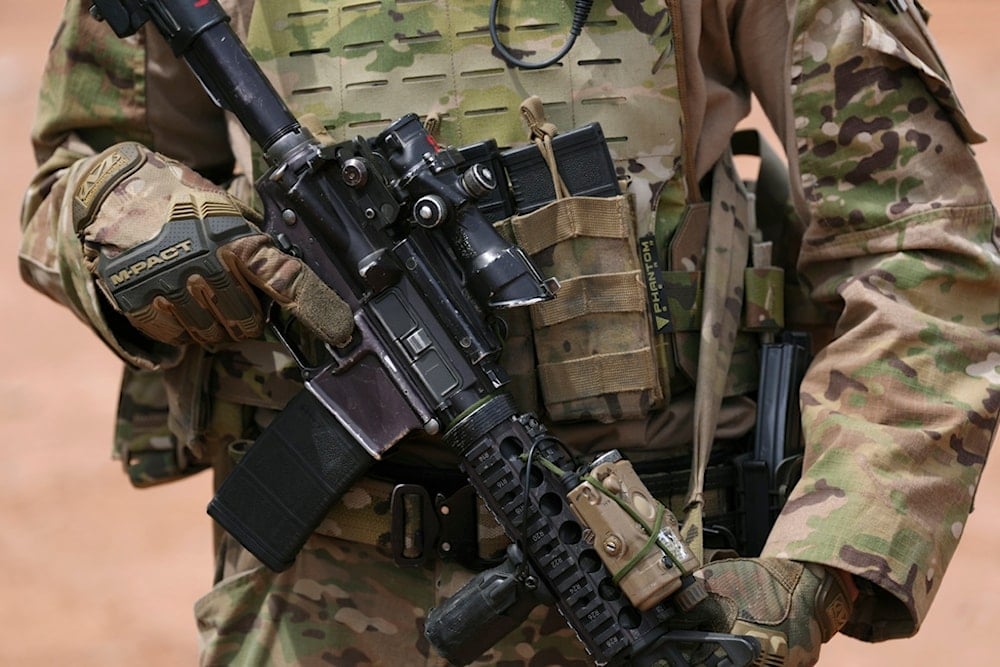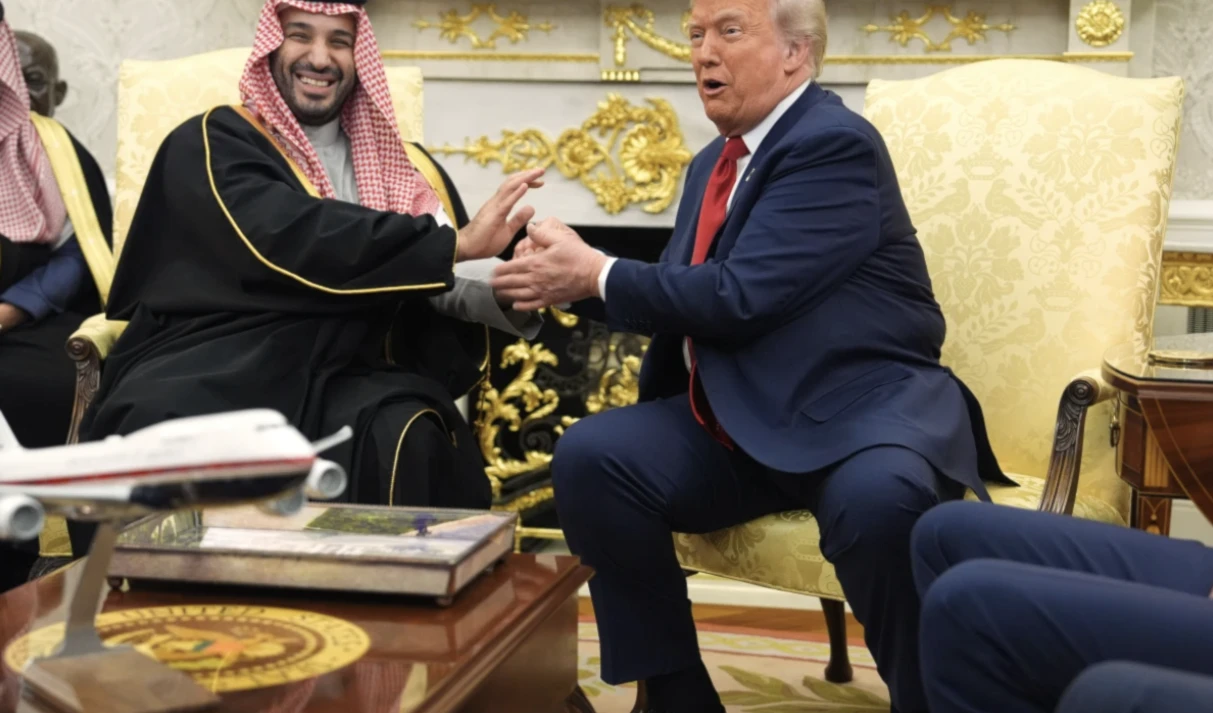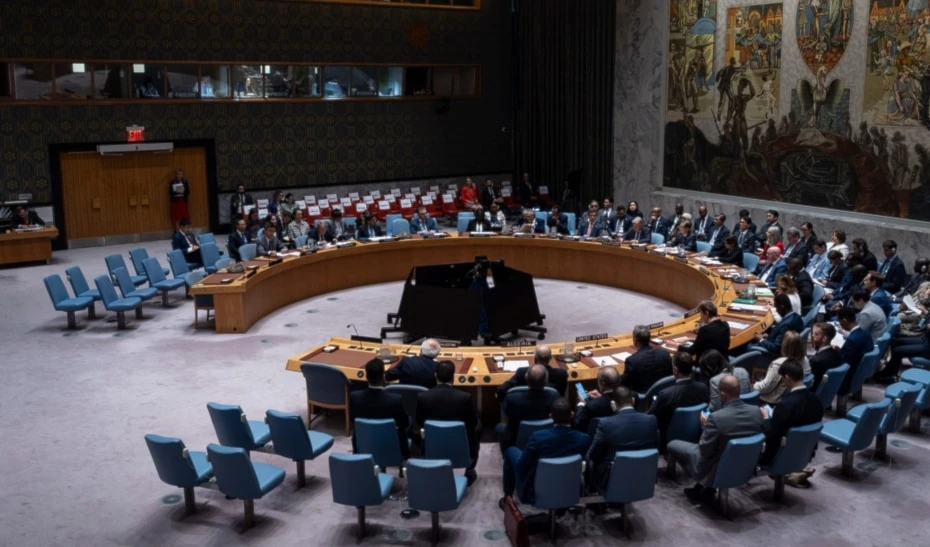US Army may cut up to 90,000 troops amid budget, strategy shift
This potential downsizing aligns with broader efforts by Defense Secretary Pete Hegseth to implement an 8% cut to the Pentagon’s budget.
-
 A member of the US Army 212 Infantry 2nd Brigade stands next to the US-Mexico border as part of Joint Task Force Southern Border, Thursday, April 3, 2025, in Douglas, Ariz (AP)
A member of the US Army 212 Infantry 2nd Brigade stands next to the US-Mexico border as part of Joint Task Force Southern Border, Thursday, April 3, 2025, in Douglas, Ariz (AP)
The US Army is reportedly weighing a major reduction of up to 90,000 active-duty soldiers, which could lower troop numbers to as few as 360,000, according to a Military.com report.
This potential downsizing aligns with broader efforts by Defense Secretary Pete Hegseth to implement an 8% cut to the Pentagon’s budget and reflects a strategic pivot away from operations in Europe and counterterrorism missions, Fox News highlighted.
The proposed changes are part of a broader initiative to reshape the Army into a leaner, more agile, and technologically advanced force tailored to meet future challenges, particularly in the Indo-Pacific, where China is viewed as a primary strategic competitor.
"We are building more combat power while reducing staff and overhead. End Strength might even go up," Army spokesperson Cynthia Smith told Fox News Digital, suggesting that while staff and overhead may be reduced, overall combat power — and even force size — could increase depending on how restructuring is implemented.
Although exact figures have not been officially confirmed, internal deliberations suggest that the Army’s active-duty strength could be reduced from 450,000 troops to somewhere between 360,000 and 420,000.
One defense official warned of potential negative consequences if the cuts proceed without a strong plan to retain talent: "If we reduce the force without a clear retention strategy, we risk losing talented people who have other options," the official told Military.com.
Speaking at NATO headquarters in Brussels on Thursday, US Secretary of State Marco Rubio conveyed President Donald Trump’s position.
"He’s against a NATO that lacks the capabilities needed to fulfill its obligations," Rubio underscored. "This is a hard truth, but one that must be addressed."
Last year, the US Army eliminated roughly 24,000 positions tied to counterterrorism missions, most of which were already vacant.
Despite recruitment challenges in recent years, the service met its 2024 enlistment target of 55,000 by the end of the fiscal year in September.
Pentagon plans for restructuring in Europe could pose challenges: Top US general
Meanwhile, the top US general in Europe warned on Thursday that the Pentagon’s internal discussions about restructuring elements of the US military, including possibly relinquishing the United States’ longstanding leadership of NATO forces in Europe and consolidating military commands, could present serious challenges.
General Christopher Cavoli, the commander of US European Command and NATO’s Supreme Allied Commander Europe (SACEUR), told the Senate Armed Services Committee that merging the US European and Africa Commands would significantly stretch the military’s capacity.
“I would have the responsibility for 50 more countries... it would be a stretch,” he pointed out.
The US Africa Command was separated into its own entity in 2008 to address specific US national security interests on the continent.
Hegseth is also reportedly weighing whether the SACEUR role — held exclusively by Americans since NATO’s founding — should continue to be filled by a US military official. This possibility has raised concerns about implications for nuclear command and control, as well as the prospect of American troops being placed under non-US leadership.
“I think those are things that would have to be considered carefully,” Cavoli indicated.
These deliberations come amid heightened unease in Europe over the future of NATO, the cornerstone of European security for 75 years.
Although the US military maintains a force of over 100,000 troops in Europe, Hegseth has told European counterparts that they should not assume the US presence on the continent is indefinite.
Several American lawmakers have expressed concern over the proposed changes. Hegseth has been critical of the number of high-ranking generals, arguing the military is top-heavy with three- and four-star officers.
Read more: US Army male enlistment plunges by 35% in past decade

 4 Min Read
4 Min Read










